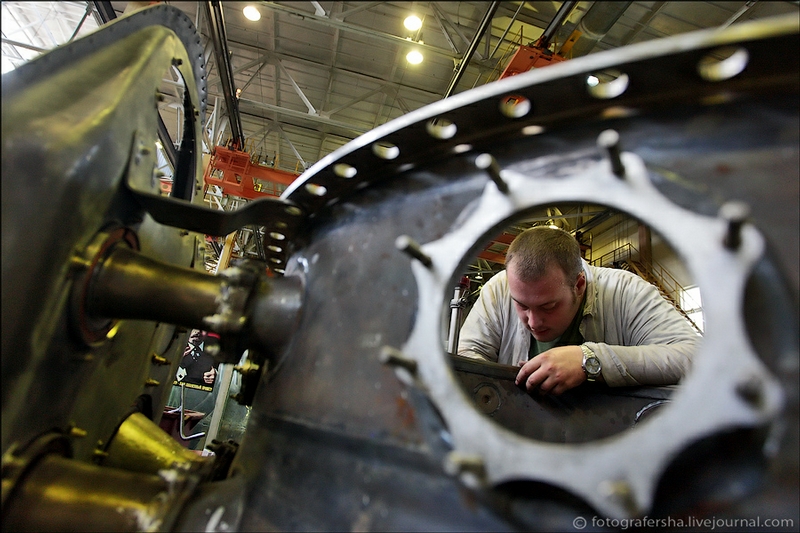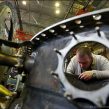
Ukraine to Develop Defense Industry Without Russia
Publication: Eurasia Daily Monitor Volume: 11 Issue: 213
By:

The annexation of Crimea and the hybrid war with Russia that ensued have changed the Ukrainian government’s attitude toward the domestic military industry. Consequently, Ukraine’s arms production sector is likely to cease being an export-oriented industry that depended on Russia and exploited the fame of the Soviet military-industrial complex, while not developing much of its own hardware or technologies. Indeed, President Petro Poroshenko told the government last September that the Ukrainian military-industrial complex could become one of the engines of the national economy (Ukrinform.ua September 10).
“Strategy-2020,” a reform plan Poroshenko offered to the nation, provides for increasing military spending to 5 percent of GDP in 2020 from 1 percent until now. The manpower of the Armed Forces will be expanded as well. Poroshenko plans for Ukraine to have 7 military personnel per 1,000 residents, up from 2.8 now (president.gov.ua, September 29). Most recently, Poroshenko instructed the government to increase military spending to at least 3 percent of GDP already in 2015 (president.gov.ua, November 5).
The first steps in this direction were taken last summer, when it became clear that the Ukrainian army was too weak to protect the eastern industrial Donbas region (area encompassing the Donetsk and Luhansk provinces) from ill-equipped and ill-trained Russia-backed militants supported by a limited Russian military contingent. Ukraine’s parliament, therefore, approved a 1.5-percent war tax on personal incomes and increased other tax rates in order to boost military spending. As a result, defense spending growth accelerated to 60.4 percent year on year, even as overall state budget revenue increased by just 3.9 percent in January–October (minfin.gov.ua, November 28).
This should be a boon to the domestic defense industry, which has, thus far, had to export almost 100 percent of its products, even though 53 percent of Ukrainian military hardware was over 25 years old, and only 1.2 percent of the military’s equipment was newer than 10 years (business.ua, April 21). A case in point has been the truck manufacturer KRAZ, which used to survive mainly thanks to orders from the Middle East. Recently, however, it began supplying newly designed military trucks to the Ukrainian army (fakty.ictv.ua, November 20). In January–October, KRAZ production was up 53 percent year on year, and in October alone it jumped 140 percent year on year (avrokraz.com.ua, November 5).
Despite more than two decades of underfinancing, Ukraine’s defense sector remains one of the most developed local industries. Some facilities in shipbuilding and missile production are unique, but Ukraine also makes more standard military products, such as armored vehicles, tanks, radar systems, helicopter engines, transport aircraft, various components for military aircraft, small arms and ammunition. Domestic producers also have numerous design bureaus. If more funds are poured into the industry, it will likely be able to not only contribute to rearming Ukraine, but also to boost exports further and have more resources to devote to research.
However, Ukraine lost some of its defense industry potential this year. With Crimea’s annexation, the state military industry concern Ukroboronprom lost 13 enterprises located there, mainly shipyards and aircraft repair plants (ukroboronprom.ua, accessed on November 28; business.ua, April 21). The shipyard Morye, which makes naval hovercraft and speedboats, stands out among them. Crimea’s annexation may disrupt a Ukrainian contract with China to build Zubr-type landing aircraft at Morye (feodosia.ws, November 24). Meanwhile, in the Donbas area, Ukraine has been cut off from local plants producing ammunition, explosives, engine components and radar systems—Kolchuga passive sensors, in particular. Recent Russian “humanitarian convoys” reportedly carried back over the border into Russia equipment dismantled from at least five Donbas-based defense industry enterprises (forbes.ua, September 1).
Following the Crimean events, the Ukrainian government has severed links with the Russian defense industry. Ukrainian Security Service (SBU) chief Valentyn Nalyvaychenko told a briefing in November that no military industry enterprises located in government-controlled areas were cooperating with Russia (pravda.com.ua, November 18). This is natural, since Ukraine has been in a de facto state of war with Russia since February. Kyiv, thereby, wants to undermine Moscow’s military potential, as the Russian defense industry and troops, in particular as far as missiles and aircraft are concerned, to a large extent depend on Ukrainian equipment supplies and services. The Ukrainian firm Motor Sich supplied engines for Russian Mi helicopters; Arsenal plant delivered infrared homing heads for air-to-air missiles; Artem equipped Su and Mig fighter jets with air-to-air missiles; Zorya-Mashproyekt used to sell gas turbines for naval vessels; and Ukrainian experts serviced Russia’s intercontinental ballistic missiles (ICBM)—SS-18s in particular (rian.com.ua, June 19; business.ua, April 21).
Russia has been one of the main markets for the Ukrainian defense industry. It will likely be easy to enforce a ban on cooperation with Russia on the state-owned behemoth Ukroboronprom, whose first deputy CEO Serhy Pinkas insists that all cooperation with Russia had stopped (ukroboronprom.com.ua, October 23). However, it may be trickier with independent players. A case in point is the Zaporizhya-based company Motor Sich. Russia had been the main market for its engines for decades. It has been rumored that Motor Sich was trying to circumvent the ban, in particular by moving the production of cruise missile engines being produced for Russia to Belarus (antikor.com.ua, November 16). Most recently, Motor Sich denied reports that it continued supplying engines for Russian military helicopters (ukrinform.ua, November 24).
Due to the war, the Ukrainian defense industry urgently has to replace Russia with other export markets. But thanks to the war, Ukraine’s domestic market is also expanding, especially as the West continues to dither on supplying the embattled country with lethal weapons. It thus seems like high time for Ukraine to seize the opportunity.




